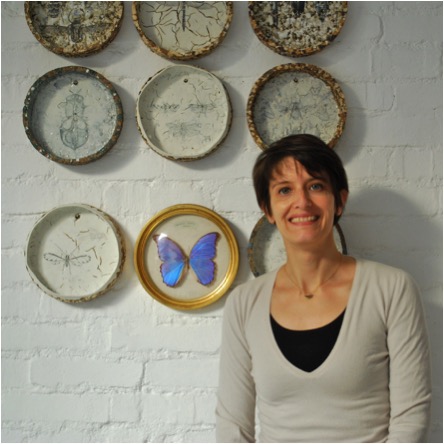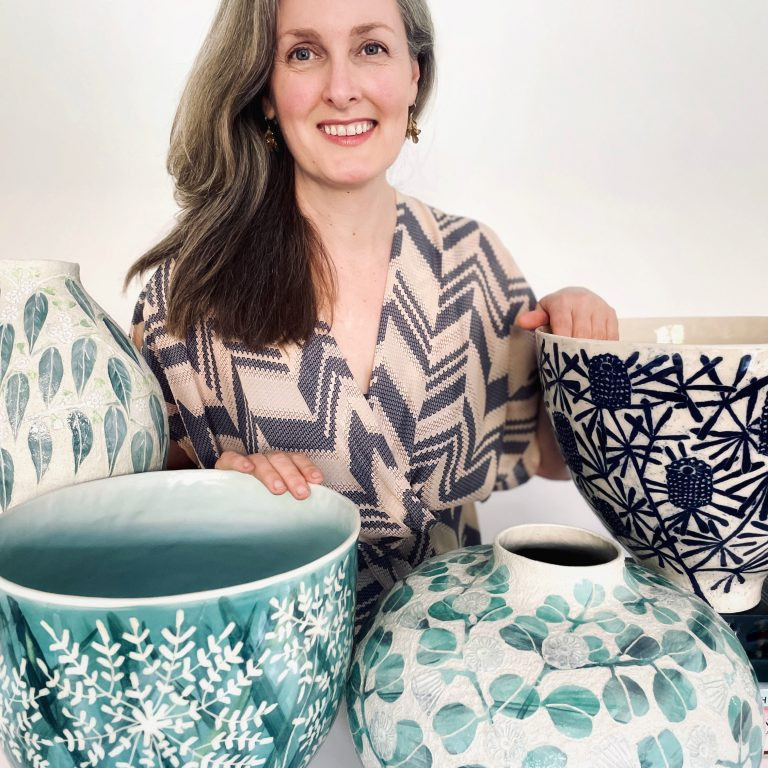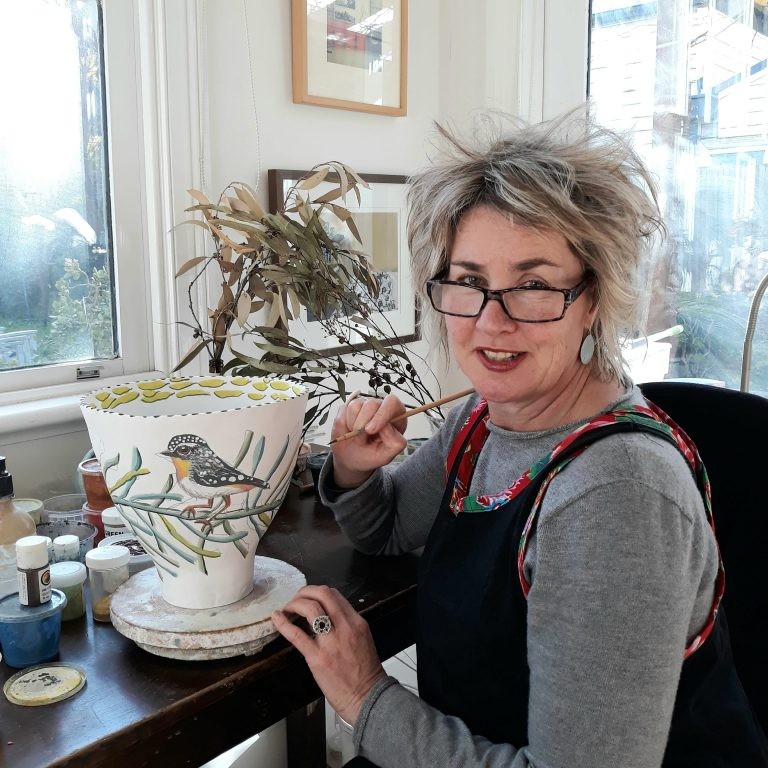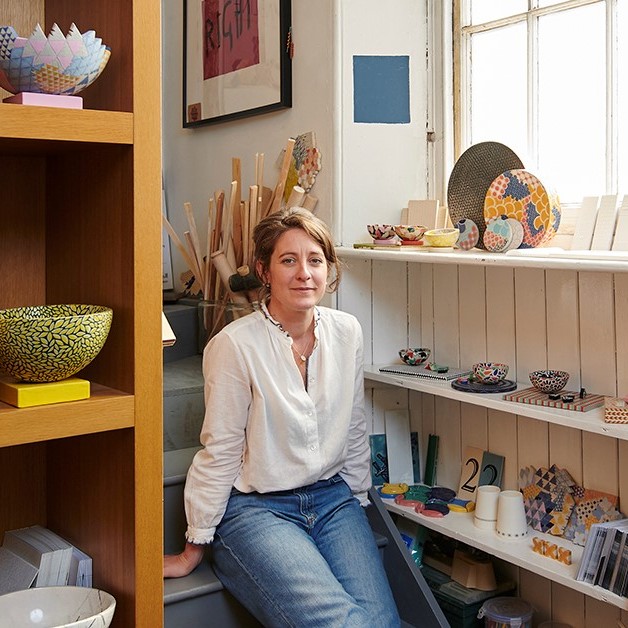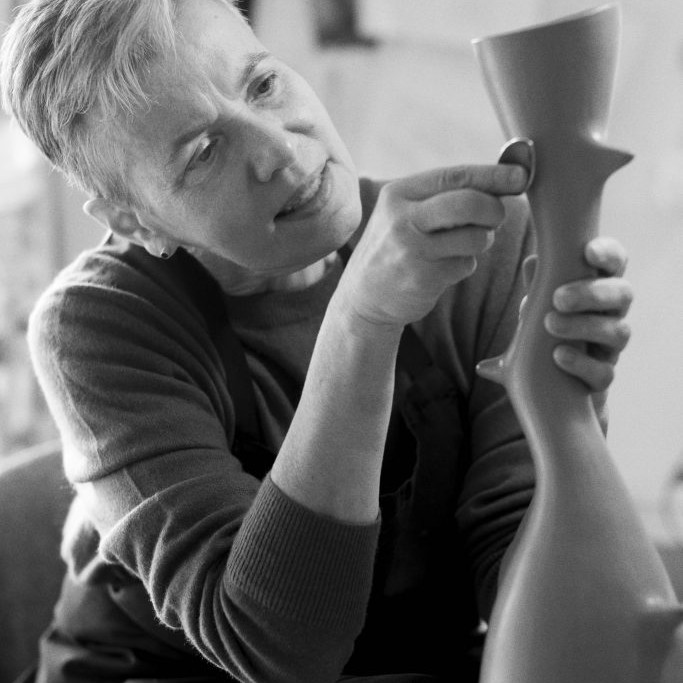Elisa Confortini Ceramic Artist - Genova, Italy
Discuss your ceramic technique
What is it about clay that give you such pleasure in the creating?
What types of clay do you use?Where do you source your clay from?
Can you discuss the techniques you use with very high temperatures and how this achieves the results you want in your glazes?
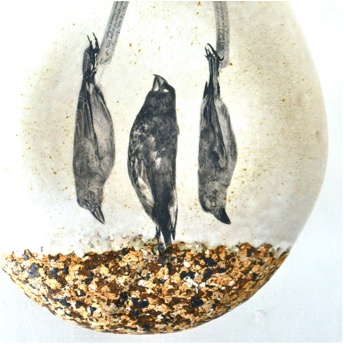
Although in Italy there is a long tradition of Majolica, and I also began using this kind of ceramic, I always loved the material resulting from high temperature firing: the color, the hardness and the strength of the earth, its sounds, and the natural colors of glazes. I use stoneware, porcelain and refractory clay, often combined as I love the contrast and the tensions that are created: the cool white of porcelain with the warm tones of the clay and the smoothness of the glaze.
The origin of the clay is various: stoneware from Germany, porcelain from France and refractory clay from Spain.
The process is manual, but in some cases I start with basic shapes, obtained in the mold, which then I complete or modify. I personally produce the glazes, preferring whites and soft colors, shades and those small imperfections that make the glaze alive and material.
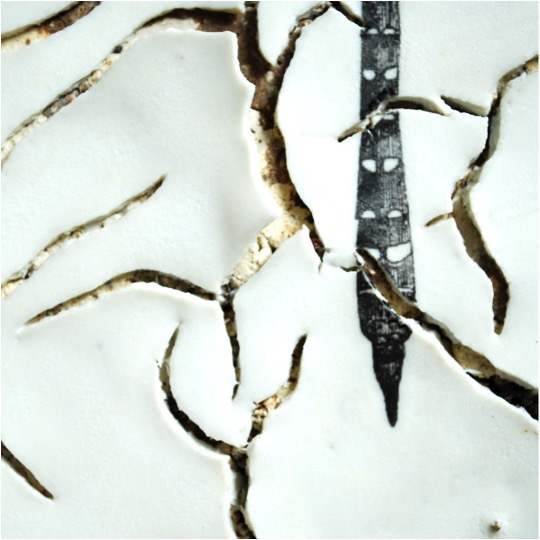
Detail
Your work has a very organic look and feel, please discuss?
I have a particular interest in exploring the sensorial, emotional and expressive qualities of natural materials. I’m passionate about collecting things even without an instant logic, listening to their form, their material, and I believe that this kind of feeling comes out even in my works.I work with synthetic and basic structures, because the primary element allows creativity to be free.Even in the world of forms there is space both for complexity and simplicity. Usually in my works complexity is delimited. Two opposite states of human soul: one calm and static, the other strong and dynamic.
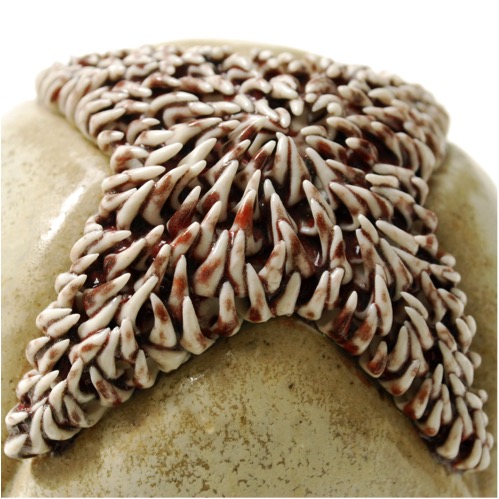
Can you explain the sizes of your work?
When making pottery, dimension of your work depend directly on dimension of the kiln you have. This could also be a limit. I realize unique pieces ranging from ten to about seventy centimeters. But I like to conceive my works as groups, combinations, starting from a theme I’m interested in and then creating a series of small changes. This allows me to go through an interesting research study, on structure or material, and to develop the creative process even during the final phase of my work. This way the pieces can have their own life either individually or as a part of a whole installation.
How did your residency in Fupling, China develop your work?
In 2008, I stayed at the Fuping Pottery Village in China. This experience was the award of the ICMEA International Ceramic Magazine Editors Association contest for rising artists. I was included in a group of Italian pottery artists working there from April to May. It was a very strong experience from both human and professional point of view. It was my first trip into a reality of life and work so different from mine and it was a turning point in my work and in my life. The people I met that time led me to new and unexpected tracks.
During the summer of the same year, I moved to Genoa for love, and not far away from the city, I started to spend time in the workshop of the sculptor Adriano Leverone. I consider him my mentor and the motive of an important professional growth. I was able to begin a research on high-temperature clays and glazes and I approached a different material – bronze – which I started using to realize some of my works.
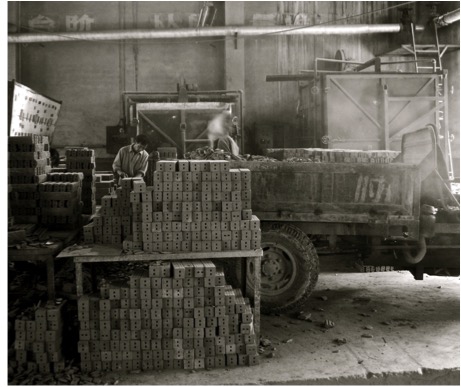
Discuss the importance of working with Enrica Negri from Milan to your art?
In the mid-90s, with Enrica Negri, my passion for ceramic material began. At the time I was working in the studio of a photographer and I remember flipping through a magazine and being fascinated by the work of this potter from Milan. I contacted her and I took a pottery class from her. I later attended other workshops, other classes but she represents my beginning in the world of ceramic, as well as Adriano Leverone has meant that in the world of sculpture.
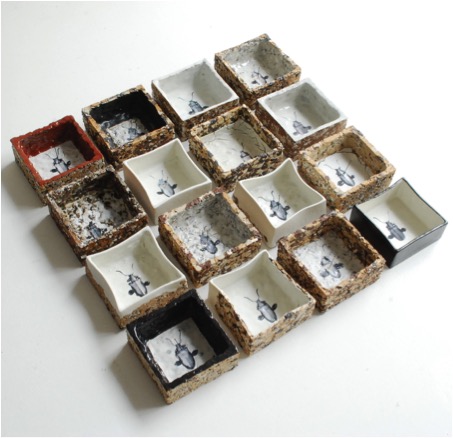
‘Entomological Collections’
Discuss the importance exhibitions have, and continue to have, on your work?
Exhibitions, biennials of pottery are the opportunity to present my work but also a comparison, a discovery. It is the way to get into the game and out of the atelier, to see my work in another context and obtain new inspiration. I consider this a fundamental moment of professional growth.
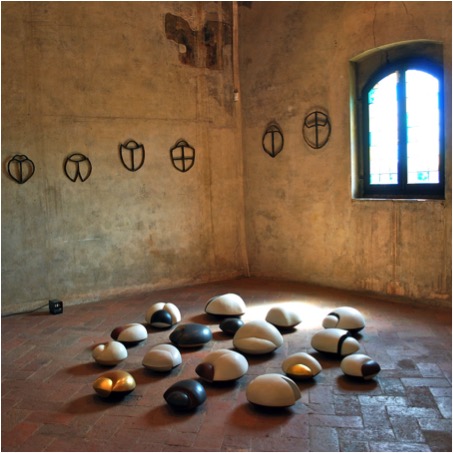
Expo Contreta 2010
Your studio
What lead you to open your workshop “Atelier99”?
How many people work in the workshop?
Can we have a peek inside the workshop?
Discuss the size (space) and the equipment
At first, I worked at home or in my garage with an outside gas kiln, or at other pottery makers. These conditions were temporary, and finally in 2011 I managed to open my workshop “Atelier99”. The room belonged to an old butcher shop, where I saved the hooks that are still on the wall. I redecorated everything to create a neutral, white space, very bright, perfect for working and highlighting the volumes and the tones of the sculptures. I work alone, the space is not very big but enough for two working tables, the 200 liters kiln, the wheel, the spray booth, and a small exposition area.
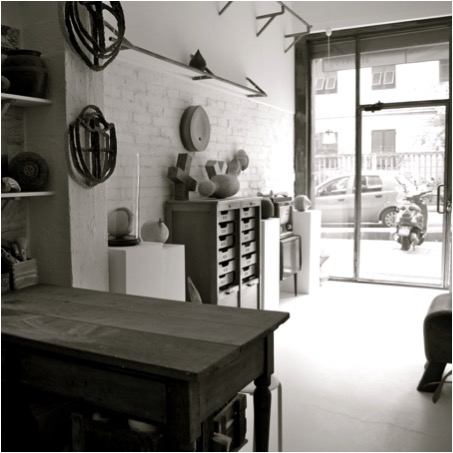
Explain the logo you have for your workshop?
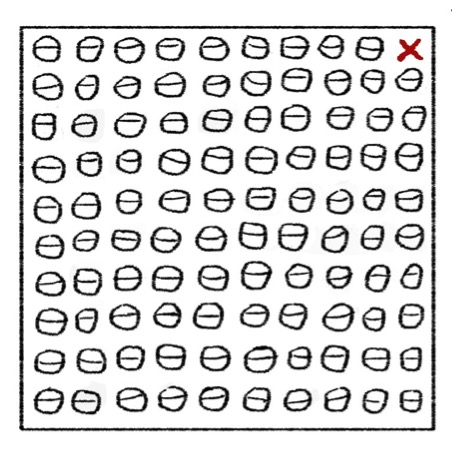
The name and logo of my workshop comes from a discovery: an old iron rack for bottles found in a country house. One hundred hooks available, but one missing: that’s why 99; 99 spaces for 99 cups. A number that becomes infinite as infinite is the variety of forms, colors, dimensions, textures to be created.
A simple object as starting point, always present, to characterize and recall the infinite possibilities. And the cup: essential, useful, universal, primordial, it bonds and becomes the symbol of present and potential creativity that accompanies us in any place and in any time.
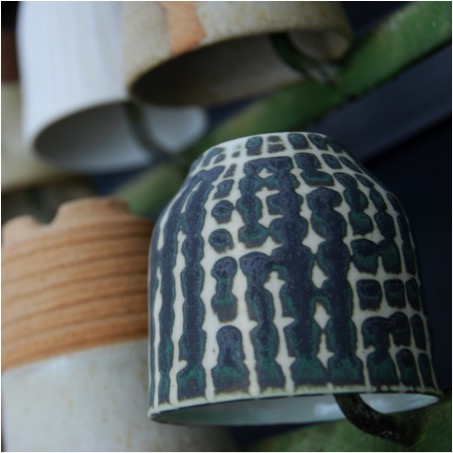
Can you discuss your current work and the addition of ‘Bug’ in the work?
Entomology has always fascinated me; I also studied it at the agricultural school. It has always been with me and now that I work with forms, it has come back to me powerfully.
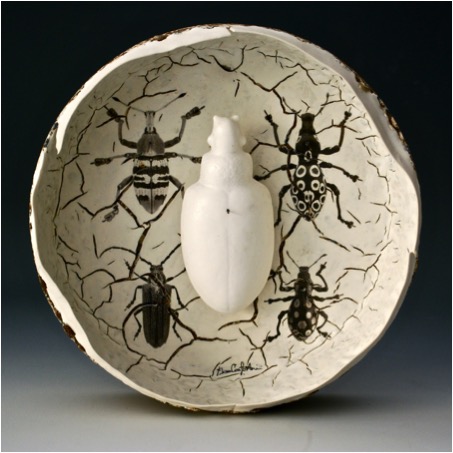
I’m fascinated by the incredible perfection, structure and variety enclosed in such small beings. They are fundamental in the balance of the world but they are considered insignificant or annoying, useless or harmful, to be eliminated or collected, but always to be killed. This is where my work starts with them: an ecological and environmentalist reflection on the use and the exploitation of living beings.
My “bugs” will lie on the ground, preserving just the memory of an event lived only by the primary spectators, leaving to everyone’s imagination the mental reconstruction of what it used to be and what it’s not anymore.

What are you currently working on?
I’m currently caring on the work about decals for the “Collezioni Entomologiche” (Entomological collections) by extending the theme to other creatures.

This way I’ve created “Vasi da Esposizione” (Pots to be exposed)
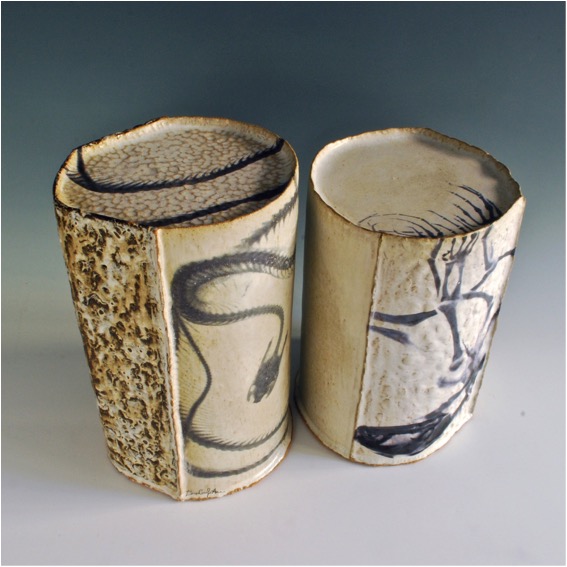
Vasi da Esposizione
“Nidi Violati” (Desecrated nests). Right now I’m working on images of birds’ skull, a meditation on the beauty and the weakness of life, between abstraction and memento mori.

Contact Details
Email:info@elisaconfortini.it
Elisa Confortini, Genova, Italy
Interview by Deborah Blakeley, November, 2014
Think a colleague or friend could benefit from this interview?
Knowledge is one of the biggest assets in any business. So why not forward this on to your friends and colleagues so they too can start taking advantage of the insightful information the artist has given?
Other artists you may be interested in:


